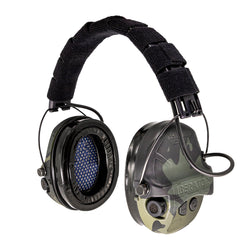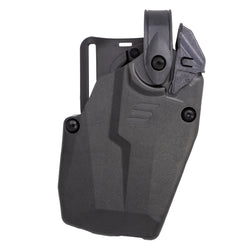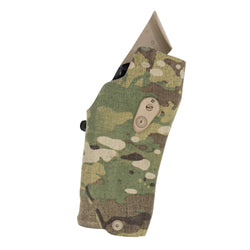Few military institutions carry the weight of legend like the United States Marine Corps. Born in 1775, the Corps has forged its reputation through grit, sacrifice, and battlefield excellence.
Across centuries and continents, Marines have fought in defining engagements that not only shaped the outcome of wars but also etched the Corps’ ethos of honor, courage, and commitment into the annals of history. Here are 10 of the many battles that helped define the Marine Corps.
1. Battle of Nassau (1776) – The First Amphibious Assault
The Marine Corps’ baptism by fire came during the Revolutionary War in the Battle of Nassau. Led by Captain Samuel Nicholas, 200 Continental Marines stormed the British-held port of Nassau in the Bahamas. Their objective: seize desperately needed gunpowder and military supplies.
The raid was successful and marked the first amphibious landing in Marine Corps history. Though modest in scale, it set the precedent for the Corps’ future as America’s premier expeditionary force.

2. Battle of Tripoli (1805) – “To the Shores of Tripoli”
The Barbary Wars introduced the Marines to global conflict. In 1805, Lieutenant Presley O’Bannon led a small force of Marines and mercenaries across 500 miles of desert to capture the city of Derna, Tripoli.
This daring assault helped end pirate attacks on American shipping and earned the Corps its place in the Marine Hymn: “to the shores of Tripoli.” It also established the Marines as a force capable of expeditionary warfare far from home.

3. Battle of Belleau Wood (1918) – Birth of the “Devil Dogs”
World War I thrust the Marines into the brutal trench warfare of Europe. At Belleau Wood, near Château-Thierry, France, Marines faced entrenched German forces in dense forest. The fighting was savage and close quarters.
Gunnery Sergeant Daniel Daly famously rallied his men with the cry: “Come on, you sons of bitches, do you want to live forever?” The Marines held firm, repelled repeated assaults, and earned the nickname “Teufel Hunden” (Devil Dogs) from their German adversaries.
Belleau Wood became a sacred name in Marine lore, symbolizing tenacity and valor.

4. Battle of Guadalcanal (1942–1943) – Turning the Tide in the Pacific
The first major Allied offensive in the Pacific during World War II, Guadalcanal tested the Marines’ endurance. Tasked with seizing a strategic airfield, Marines faced relentless Japanese counterattacks, disease, and supply shortages.
The campaign lasted six grueling months. Victory at Guadalcanal shifted momentum in the Pacific and proved the Marines’ ability to hold ground under extreme conditions.

5. Battle of Tarawa (1943) – The Cost of Amphibious Warfare
Tarawa was a brutal lesson in amphibious assault tactics. In just 76 hours, over 1,000 Marines were killed trying to take the heavily fortified island of Betio. Japanese defenders had prepared for an invasion with bunkers, pillboxes, and interlocking fields of fire.
Despite horrific casualties, the Marines prevailed. Tarawa exposed the challenges of amphibious warfare and led to improved planning and equipment for future operations.

6. Battle of Iwo Jima (1945) – “Uncommon Valor Was a Common Virtue”
Perhaps the most iconic battle in Marine Corps history, Iwo Jima was a volcanic hellscape defended by 21,000 entrenched Japanese troops. The Marines landed on February 19, 1945, and fought for 36 days to secure the island.
The raising of the flag on Mount Suribachi became a symbol of American resolve. Nearly 7,000 Marines died, and 27 Medals of Honor were awarded—more than any other battle in U.S. history. Iwo Jima exemplified the Corps’ willingness to endure unimaginable hardship for strategic victory.

7. Battle of Chosin Reservoir (1950) – “Retreat, Hell!”
During the Korean War, the 1st Marine Division found itself surrounded by Chinese forces in freezing temperatures. Outnumbered and outgunned, the Marines fought their way out in a fighting withdrawal that became legendary.
Facing temperatures as low as -30°F, they inflicted heavy casualties and preserved their unit cohesion. The battle showcased the Marines’ discipline and resilience under extreme adversity.

8. Battle of Hue City (1968) – Urban Warfare in Vietnam
The Tet Offensive brought the Vietnam War into the cities. In Hue, Marines engaged in house-to-house combat against North Vietnamese forces. The battle lasted nearly a month and was one of the bloodiest of the war.
Marines adapted to urban warfare, clearing buildings and streets block by block. Hue City demonstrated the Corps’ flexibility and courage in unfamiliar terrain.
![1st Battalion, 1st Marines [A/1/1] fire from a house window during a search and clear mission in the battle of Hue. (U.S. Marine Corps photo by Sergeant Bruce A. Atwell from the Jonathan Abel Collection (COLL/3611), Marine Corps Archives & Special Collections. CC BY-SA 2.0)](https://inside.safariland.com/wp-content/uploads/2025/09/Battle-of-Hue.jpg)
9. Battle of Fallujah (2004) – Modern Urban Combat
Operation Phantom Fury in Fallujah, Iraq, was the largest urban battle involving U.S. forces since Hue. Marines faced entrenched insurgents in a city riddled with IEDs, snipers, and booby traps. The operation required precision, coordination, and brutal close-quarters combat.
Fallujah became a defining moment in the Global War on Terror and reaffirmed the Marines’ role as elite urban warriors.

10. Battle of Marjah (2010) – Counterinsurgency in Afghanistan
In Helmand Province, Afghanistan, Marines launched a major offensive to reclaim Marjah from Taliban control. The battle was part of a broader counterinsurgency strategy that combined combat operations with efforts to stabilize and rebuild local governance.
Marjah highlighted the evolving role of the Marine Corps not just as warriors, but as peacekeepers and nation-builders in complex environments.

Final Thoughts
From the sands of Tripoli to the streets of Fallujah, the Marine Corps has earned its reputation through relentless combat and unwavering dedication.
These 10 battles are more than historical footnotes. They are the crucible in which the Corps’ identity was forged. Each engagement tested the limits of human endurance and tactical innovation, and each left an indelible mark on the Marines who fought there.
The legacy of the Marine Corps is not just written in medals and monuments, but in the stories of ordinary men and women who performed extraordinary feats. As long as the Corps exists, its warriors will continue to draw strength from these defining moments and add new chapters to its storied history.
This article is part of our series honoring the U.S. Marine Corps’ 250th birthday.









